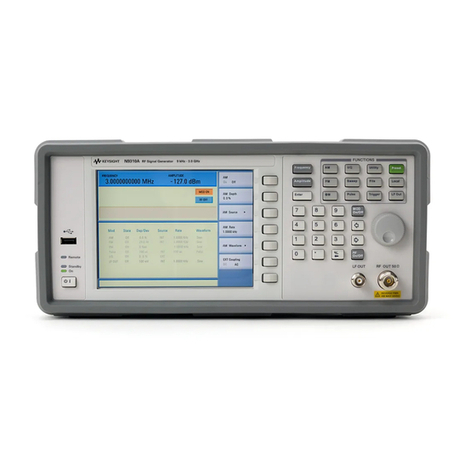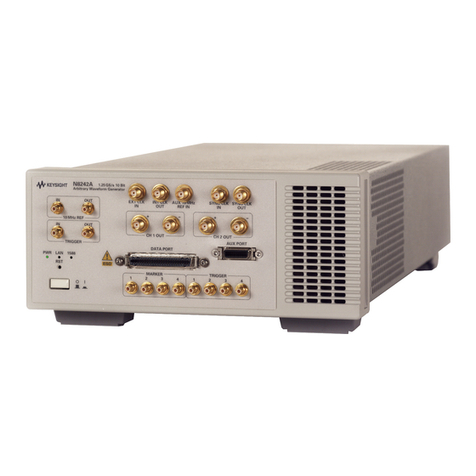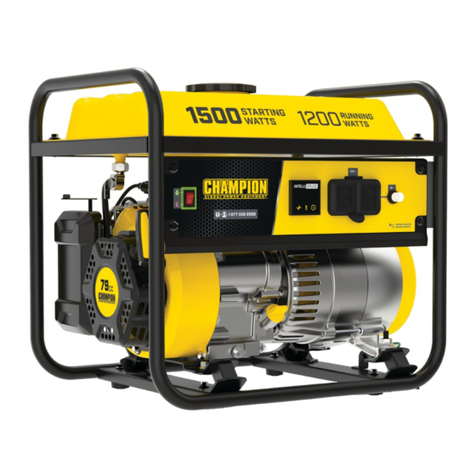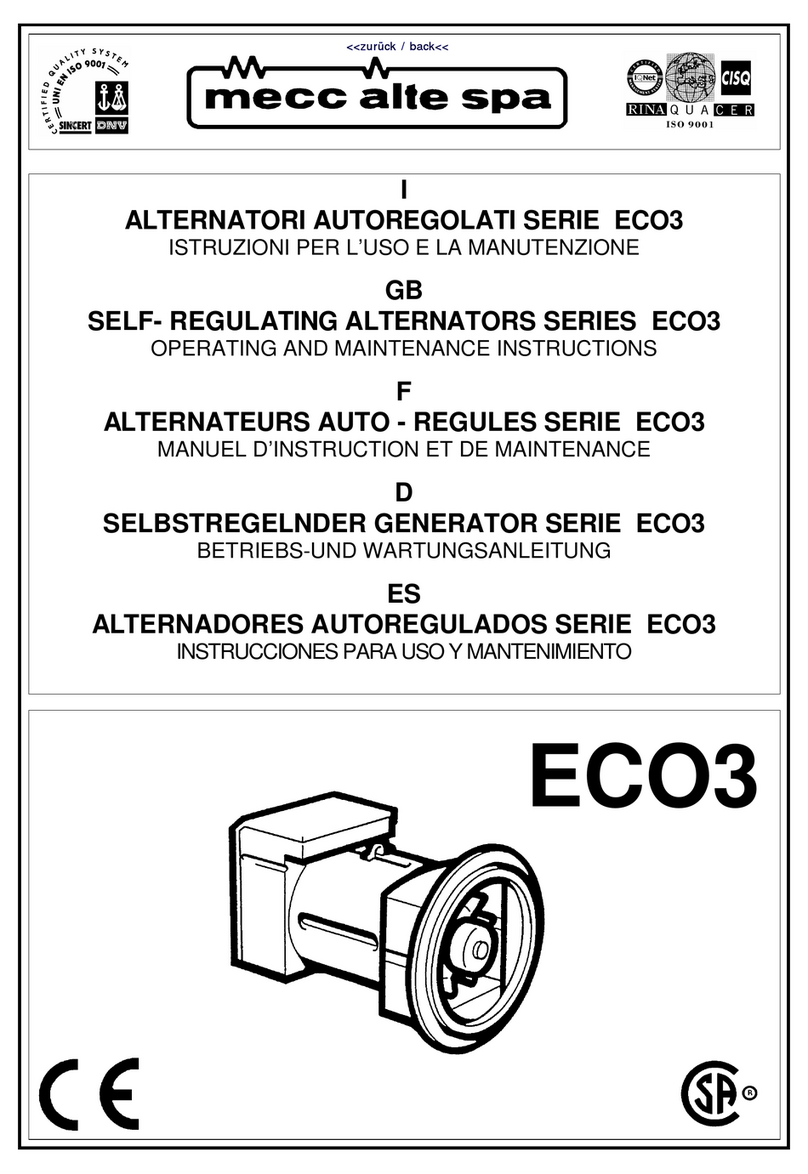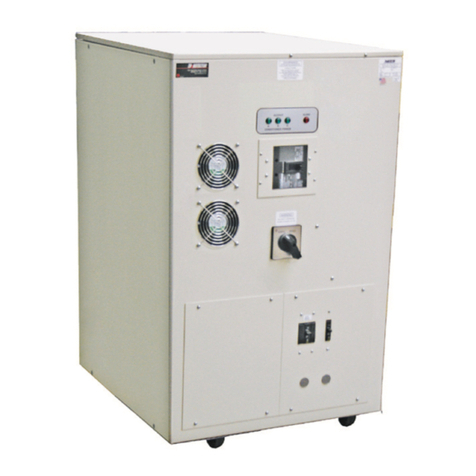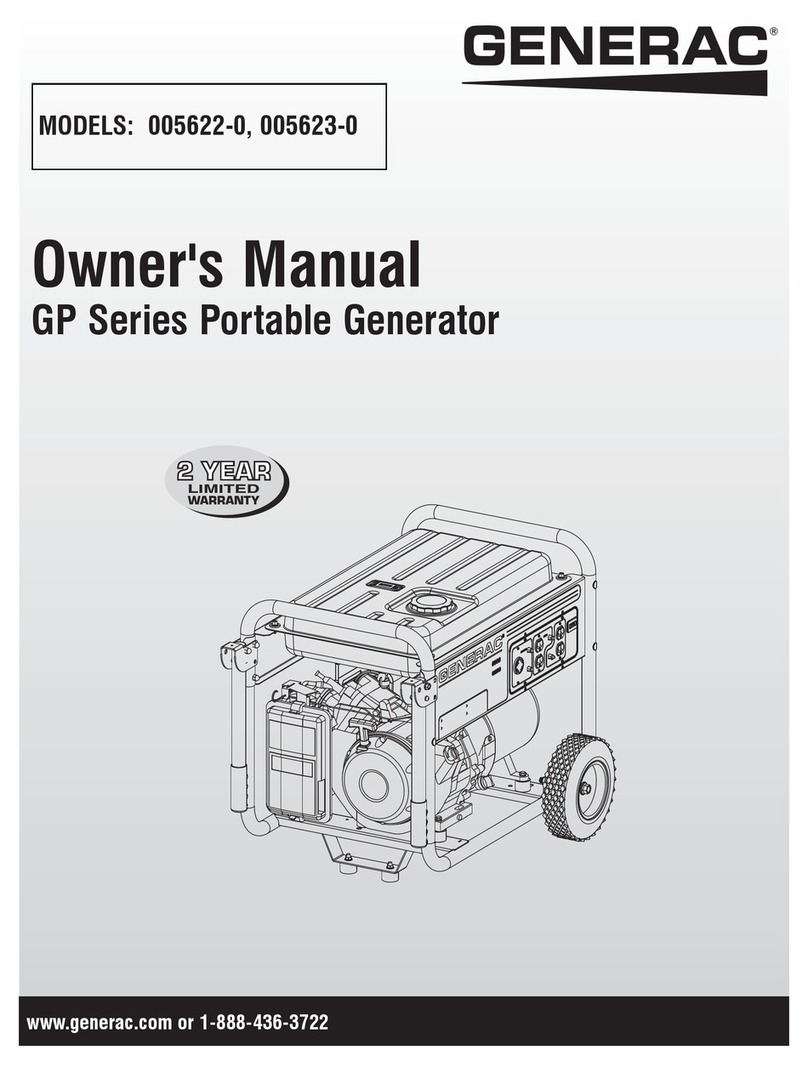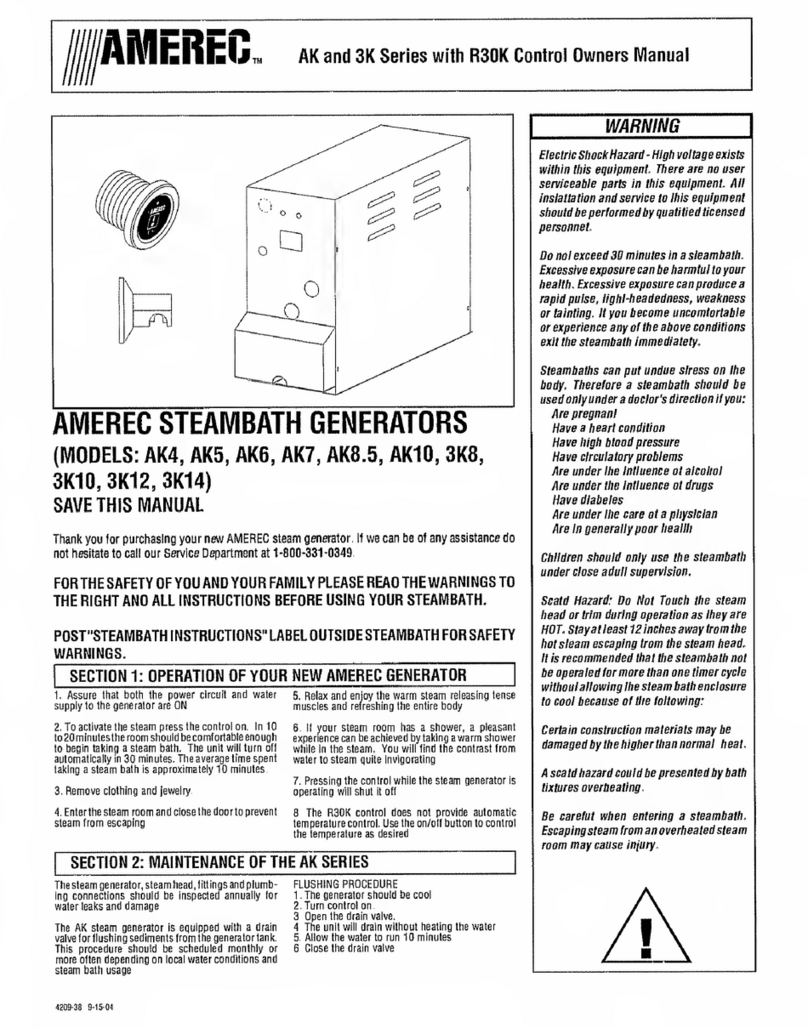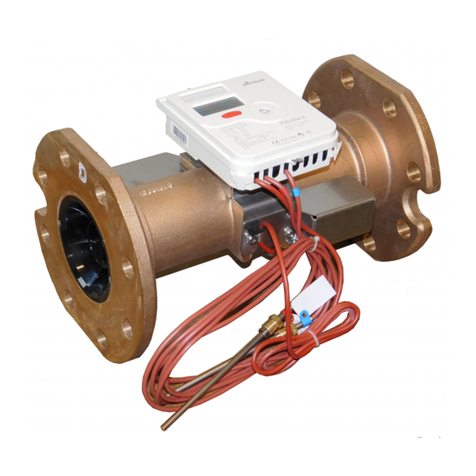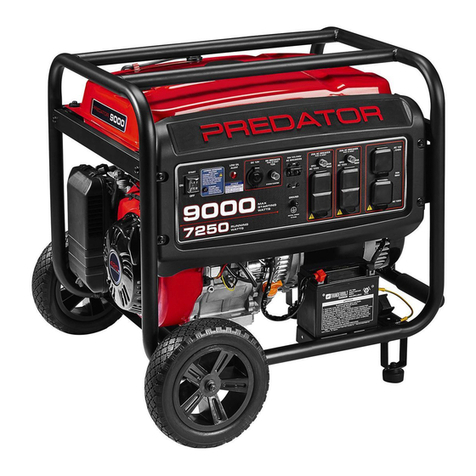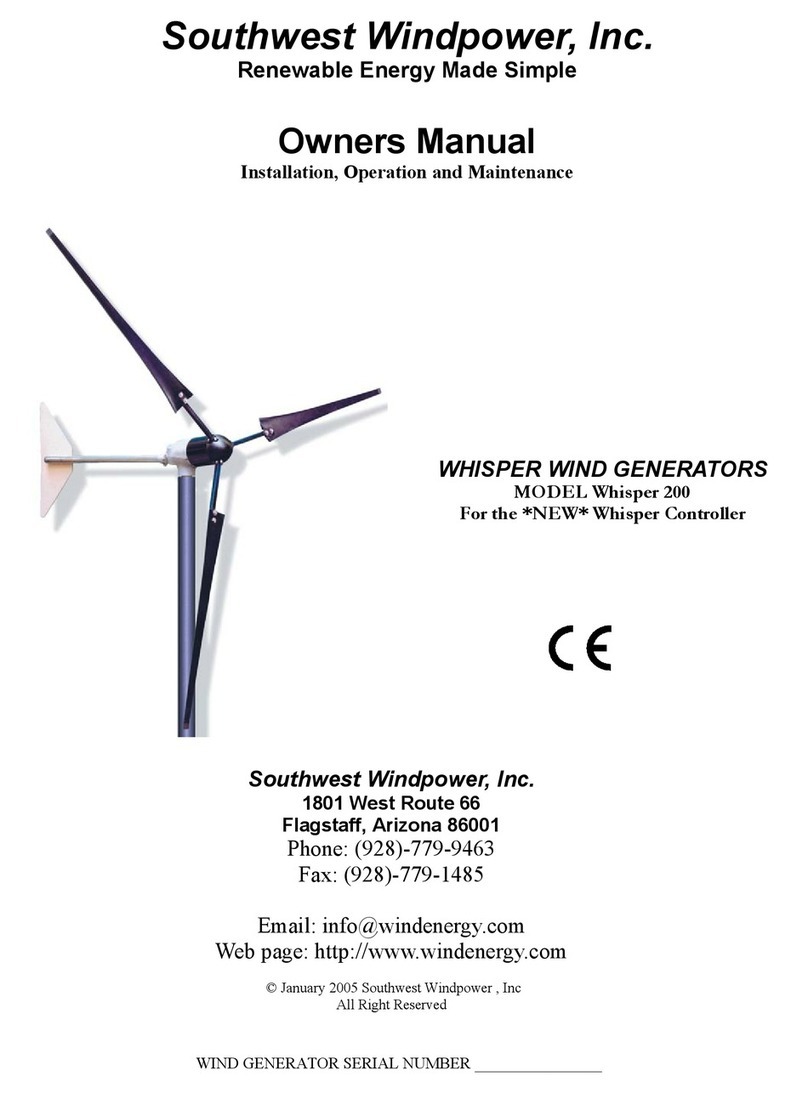
Table of Contents
Portable Generator System
Owner's Manual
Introduction.......................................................................................1
Read this Manual Thoroughly...........................................................1
Safety Rules .....................................................................................2
Standards Index.....................................................................3
Section 1 – General Information.......................................................4
1.1 Unpacking..............................................................................4
1.2 Assembly...............................................................................4
Section 2 – Operation.......................................................................4
2.1 Know the Generator ...............................................................4
2.2 Cord Sets and Connection Plugs............................................6
2.3 How to Use the Generator......................................................6
2.4 Don’t Overload the Generator .................................................6
2.5 Wattage Reference Guide .......................................................7
2.6 Before Starting the Generator.................................................7
2.7 To Start the Engine.................................................................8
2.8 Stopping the Engine...............................................................8
2.9 Low Oil Level Shutdown System............................................8
Section 3 – Maintenance..................................................................9
3.1 Maintenance Schedule ...........................................................9
3.2 Product Specifications ...........................................................9
3.3 General Recommendations ....................................................9
3.4 Service Air Filter...................................................................11
3.5 Valve Clearance ...................................................................11
3.6 General................................................................................11
3.7 Long Term Storage...............................................................11
3.8 Other Storage Tips...............................................................11
Section 4 – Troubleshooting ...........................................................12
4.1 Troubleshooting Guide..........................................................12
Section 5 – Notes ...........................................................................13
Section 6 – Warranty......................................................................14
Manual del propietario....................... 17
Introducción
......................................................................................19
Lea este manual completamente....................................................19
Instrucciones de seguridad importantes ........................................20
Índice de estándares............................................................21
Sección 1 – Informatión general ....................................................22
1.1 Desembalaje........................................................................22
1.2 Montaje ...............................................................................22
Sección 2 – Operación....................................................................22
2.1 Conozca el generador ..........................................................22
2.2 Juego de cuerdas y conectores............................................24
2.3 Cómo usar este generador...................................................24
2.4 No sobrecargue el generador ...............................................24
2.5 Guía de referencia de potencias ...........................................25
2.6 Antes de poner en marcha el generador ...............................25
2.7 Arranque del motor ..............................................................26
2.8 Detener del motor ................................................................26
2.9 Sistema de apagado - nivel de aceite ...................................27
Sección 3 – Mantenimiento............................................................27
3.1 Programa de mantenimiento.................................................27
3.2 Especificaciones del producto..............................................27
3.3 Recomendaciones generales................................................27
3.4 Servicio al filtro de aire ........................................................29
3.5 Claridad de la valvula ...........................................................29
3.6 General................................................................................29
3.7
Almacenamiento por largo plazo
...............................................29
3.8
Otros consejos para almacenamiento
........................................29
Sección 4 – Localización y resolución de problemas.....................30
4.1
Guía de localización y resolución de problemas
...........................30
Sección 5 – Notas...........................................................................31
Sección 6 – Garant
ía
......................................................................32
Manuel d'entretien........................................ 35
Introduction.....................................................................................37
Lire attentivement ce manuel.........................................................37
Règles de sécurité..........................................................................38
Index des normes ................................................................39
Section 1 – Informations ................................................................40
1.1 Déballage.............................................................................40
1.2 Montage ..............................................................................40
Section 2 – Fonctionnement...........................................................40
2.1 Bien connaître le générateur.................................................40
2.2 Cordons et connecteurs.......................................................42
2.3 Utilisation du générateur.......................................................42
2.4 Ne pas surcharger le générateur...........................................42
2.5 Guide de référence de wattage.............................................43
2.6 Avant le démarrage du générateur........................................43
2.7 Démarrage du moteur ..........................................................44
2.8 Arrêt du moteur....................................................................44
2.9 Système d'arrêt de bas niveau d'huile...................................45
Section 3 – Entretien ......................................................................45
3.1 Programme de maintenance.................................................45
3.2 Caractéristiques techniques des produits..............................45
3.3 Recommandations générales ...............................................45
3.4 Entretien du filtre à air ..........................................................47
3.5 Jeu des soupapes................................................................47
3.6 Généralités...........................................................................47
3.7 Stockage à long terme .........................................................47
3.8 Autres conseils de stockage.................................................47
Section 4 – Dépannage...................................................................48
4.1 Guide de dépannage ............................................................48
Section 5 – Remarques ..................................................................49
Section 6 – Garantie.......................................................................52





















